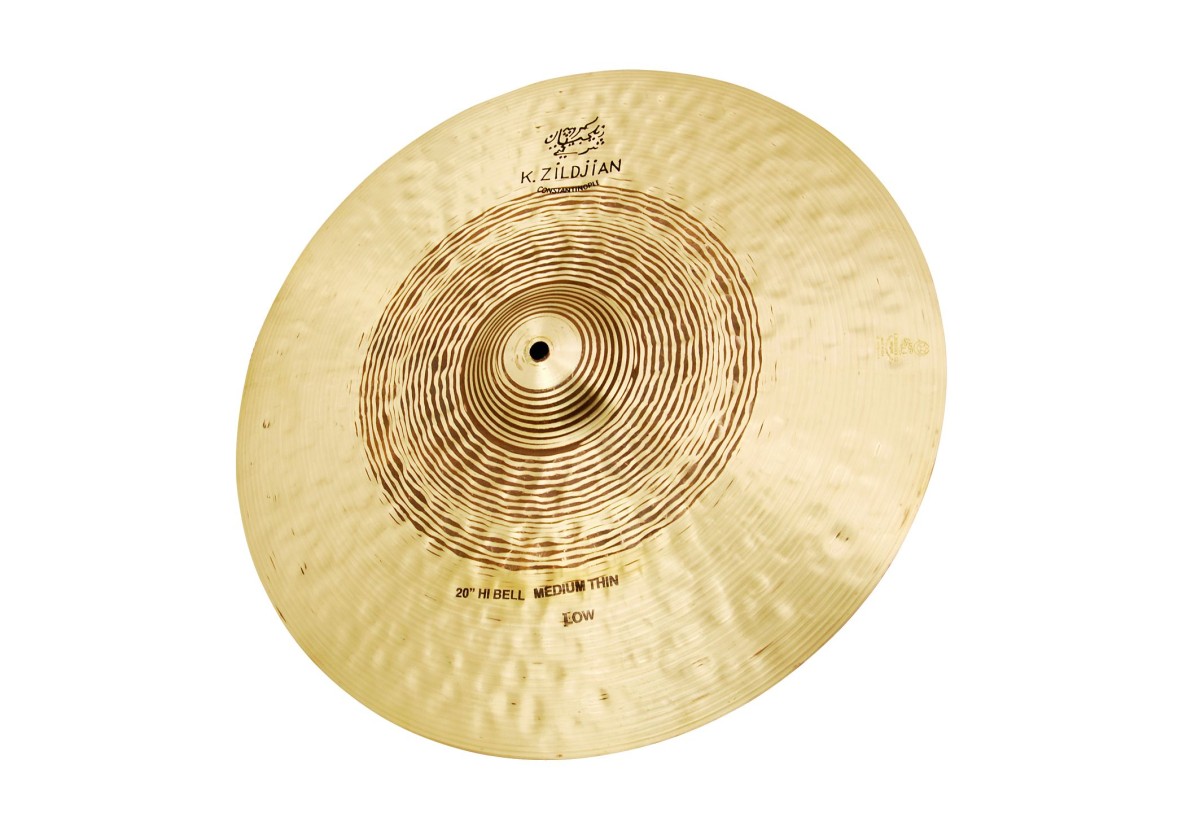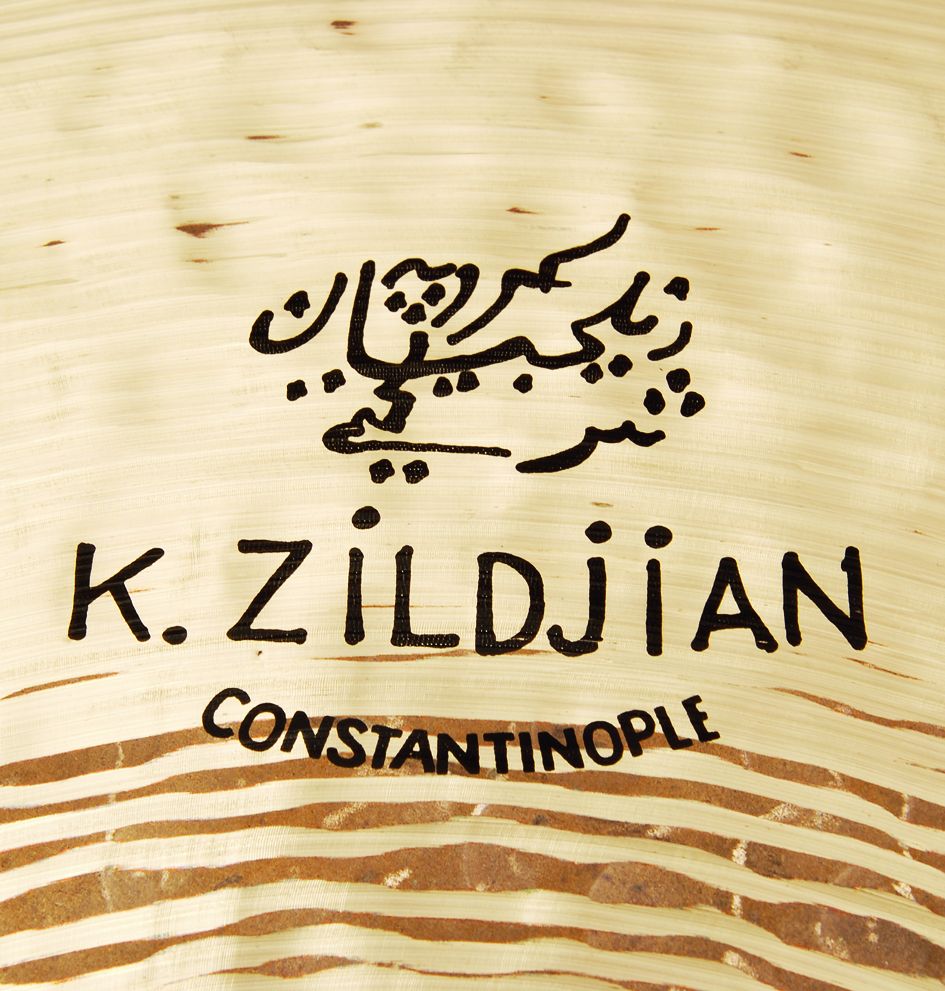MusicRadar Verdict
All of the cymbals here work across various dynamic boundaries and though they have clearly been designed with the needs of jazzers in mind, they should appeal to a broad range of drummers. Musical players from pretty much any genre would be advised to take a listen.
Pros
- +
Outstanding cymbals that are full of character and bursting with musicality.
Cons
- -
Such individuality means the cost is high and the range ls limited.
MusicRadar's got your back


Zildjian's K Constantinople range made its debut in 1998 and was one of the final projects undertaken by the late Armand Zildjian. An exercise in recapturing the mystical qualities of old, Turkish-manufactured K cymbals, the success of the K Constantinople range was a reflection of Armand's lifetime within the industry.
The original Ks that inspired the K Constantinople range were made under the tutelage of Kerope Zildjian in the late 19th and early 20th century in what was Constantinople (now Istanbul). They became popular among jazz drummers in the '50s and '60s and specimens still change hands, today.
Since Armand's death in 2002, Zildjian's research and development team, led by Paul Francis, has continued work on the K Constantinople range, in effect reproducing cymbal-making techniques from 100 years ago. The result is 10 new cymbals - seven Hi Bell rides, two Flat rides (the first K Constantinople examples) and a new pair of hi-hats.
Back to the future
K Constantinoples begin life in the Zildjian factory alongside other cast Zildjian cymbals, but once they have been rolled and cupped they go to a select team of cymbalsmiths to be worked by hand. Only 40-50 cymbals are ever produced and all work is overseen by Paul Francis.
The cymbals certainly have the appearance of being handmade and are covered in a network of deep hammer marks and extensive lathing. In addition, radical spiral lathing is found on the Hi Bell models, whereby the metal between the lathing grooves is left unfinished. Each cymbal takes around seven days to make and any pits or other surface impurities that would usually be removed on modern cymbals are retained, providing all-important individual character.
The Hi Bell rides are available in a choice of weights and tunings in two diameters - 20" and 22", with the exception of the Dry ride, which comes in the 22" diameter only. The two Flat rides are similarly separated by their sizes (20" and 22"), while the hi-hats are 13" versions of the existing 14" K Constantinople hats.
The new Hi Bell rides are easily distinguishable from the regular K Constantinople rides on account of their more pronounced bell shape (hence the name). The design comes from a pair of 18" K cymbals made in Constantinople in the early 20th century, now owned by Joe Adato of the Cleveland Orchestra. The larger surface area of the bell is intended to provide a wider range of frequencies without being overpowering.
Lathe to the rhythm
The theory behind the spiral lathing featured on the Hi Bell rides is that it helps keep the cymbals controllable, so while the rides are all thin enough to open easily for crashing, sticking is reproduced cleanly without being swamped by wash. The spiral lathing is only present from the bell to roughly halfway out of each cymbal, in order to strike a balance between control and liveliness. The exception to this is the Dry ride, which features full spiral lathing right up to the outer edge.
The three 20" models are known respectively as Thin High, Thin Low and Medium Thin Low (the first part of each name refers to the cymbal thickness, the second the tuning). All three cymbals are supremely responsive and the more you play into them, the more involved they become (as opposed to simply louder).
The Thin High model gives a sweet, silvery ping over a light frothy wash. As its name suggests, the cymbal has a high tuning - while its pitch is indeed high, the overall tone of the ride is rounded and warm. The prominent nature of the bell means that moving up to it brings a distinct focus to patterns.
The Thin Low model is a good deal deeper in pitch and overall the cymbal gives a slightly fatter and more insistent note in comparison to the Thin High. The bell is similarly meatier in its response, but the distinctions are all relative - this is still a wonderfully subtle cymbal.
Sitting in between the two Thin models in pitch is the Medium Thin Low ride. Its extra weight and thickness imbues it with a brighter and louder response and a fraction less wash. Beneath the opening clarity sits a delicious low note.
Hi and dry
Trading up to the 22" rides magnifies all of the qualities found in the 20" models. The bigger cymbals are fabulously complex instruments and it is near impossible to do them justice in a few sentences. The Thin High, Thin Low and Medium Thin Low examples, while all being very different, are as desirable as any ride cymbal that we have encountered.
The stick sound is clear and tight, the murmur of background wash is simply perfect, and crashing brings to life all of their wondrous colour. They respond intimately, flowing with whatever you play and it is difficult to think of any way in which these cymbals could be improved.
The Dry ride is a heavier cymbal and doesn't give in quite the same manner as the other cymbals, but it is extremely articulate as a result. It generates a sparser wash and its note is very dark and very dry. Aside from the obvious jazzers, Latin players and even a fair few rockers would find that there is plenty about this cymbal to love.
Flat out
The two Flat rides are both delightfully thin and, like their Hi Bell counterparts, are rippled with a comprehensive pattern of hammering and lathing. Both models wobble sensuously when played, the larger of the two quite voluptuously.
The 20" gives a clean, warm stick sound over a gentle wash. The 22" ride is far darker and mellower and produces a lovely, woody stick sound. The best Flat rides are full of subtleties, dynamic capabilities and character and either of this pair make splendid examples.
The 13" hi-hats are, in a single word, amazing. Closed, they have a soft and delicate tone, without sounding mushy. When played with brushes they are almost feather-like and stepping brings a dry, warm 'chick' sound. However, they open for a sizzling wash that quickly reaches a roar, while the crunch that they deliver when they are half open is much thicker-sounding than their diameter would suggest. They never sound anything less than eloquent and musical, and are an excellent and incredibly versatile pair of hats.
While Vintage Ks will always be sought after by collectors, these cymbals show that modern equivalents can sound just as special. If the existing K Constantinople range was already held in high regard, these new cymbals manage to surpass the standards set. Paul Francis has taken over where Armand Zildjian left off and produced some of the most complete rides that we've ever heard, while the hi-hats are nothing short of a revelation.
“A synthesizer that is both easy to use and fun to play whilst maintaining a decent degree of programming depth and flexibility”: PWM Mantis review
“I feel like that song had everything we needed to come back with”: Bring Me The Horizon’s Lee Malia on Shadow Moses, its riff and the secrets behind its tone, and why it was the right anthem at the right time
“I said, ‘Are we sure we can write a song about death?’”: The story of Mike + The Mechanics' classic No.1 The Living Years









